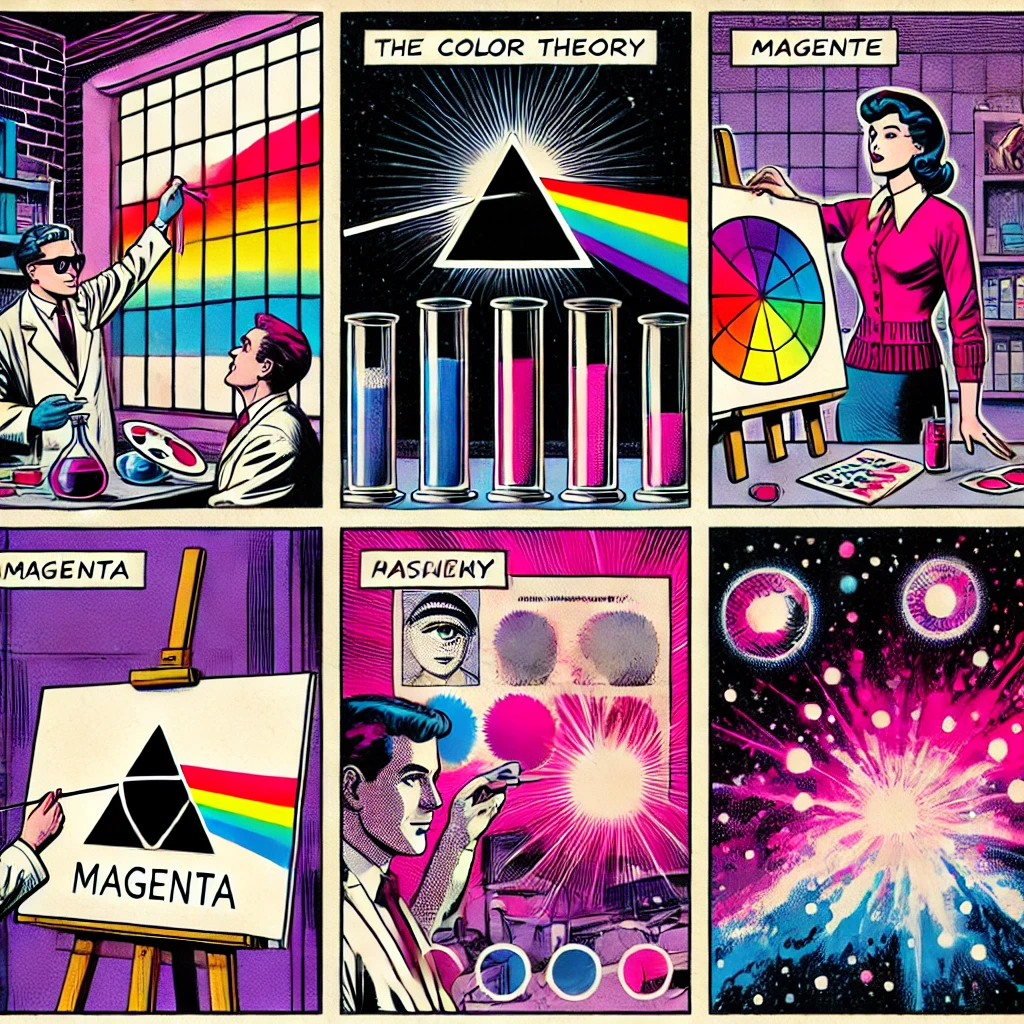The Mystery of Magenta
Published on Feb 13, 2013
Why doesn’t magenta appear in the rainbow? The answer lies not in physics but in biology.
Science presenter Steve Mould demonstrates the strange phenomenon of colour mixing, in which not everything is as it seems.
Magenta is a unique color that has fascinated scientists, artists, and philosophers for centuries due to its intriguing perceptual properties and the way it challenges conventional color theory. Here are some aspects of the mystery of magenta:
1. Perceptual Completeness: Magenta is often described as a “color without a wavelength” because it does not correspond to a single wavelength of light on the visible spectrum. Instead, it is perceived when the red and blue cones in the human eye are stimulated simultaneously in the absence of green light. This phenomenon, known as color opponency, gives magenta its distinctive appearance and makes it appear as a “complementary” color to green.
2. Synthesis in the Brain: Unlike other colors on the spectrum, magenta does not have a corresponding spectral hue, leading some to argue that it is a purely perceptual phenomenon generated by the brain rather than a physical property of light. The brain synthesizes magenta as a response to certain combinations of wavelengths, creating the illusion of a distinct color that is not present in the external world.
3. Artistic and Cultural Significance: Despite its enigmatic nature, magenta has long been embraced by artists and designers for its vibrant and eye-catching qualities. It is commonly used in art, fashion, and advertising to evoke feelings of energy, passion, and creativity. In cultural symbolism, magenta is often associated with qualities such as femininity, spirituality, and transformation.
4. Scientific Inquiry: Magenta has been the subject of scientific research and debate in fields such as color theory, neuroscience, and psychology. Scientists continue to investigate the underlying mechanisms of color perception and the role of magenta in shaping our understanding of visual cognition and the nature of consciousness.
5. Philosophical Implications: The mystery of magenta raises philosophical questions about the nature of reality, perception, and the relationship between mind and matter. Its existence as a perceptual phenomenon that cannot be directly mapped onto the physical world challenges traditional notions of objectivity and calls into question the reliability of our sensory experiences.
Overall, the mystery of magenta serves as a reminder of the rich complexity of human perception and the ways in which color can both confound and inspire our understanding of the world. As scientists and artists continue to explore its mysteries, magenta remains a captivating symbol of the boundless creativity and curiosity of the human mind.
